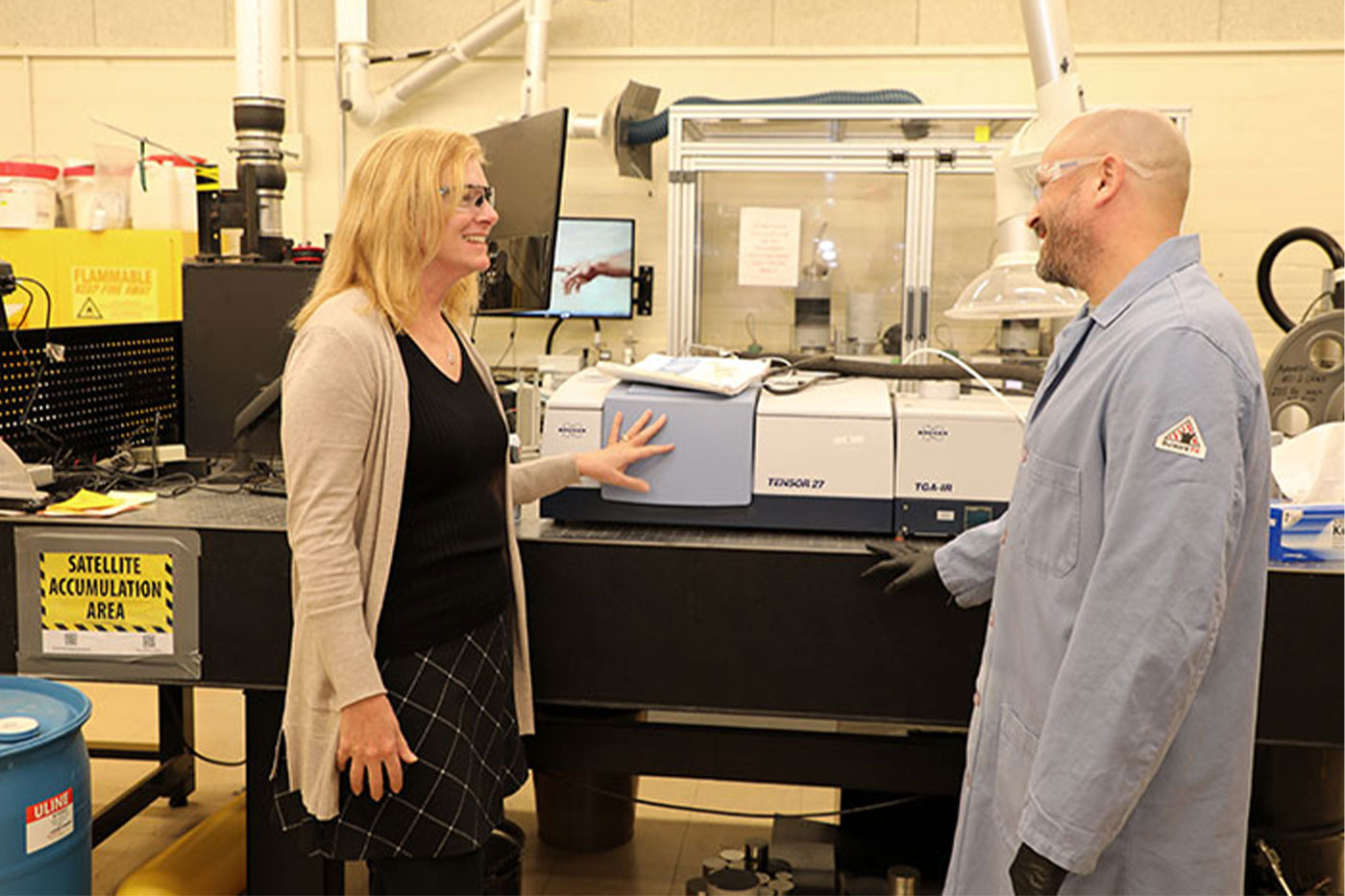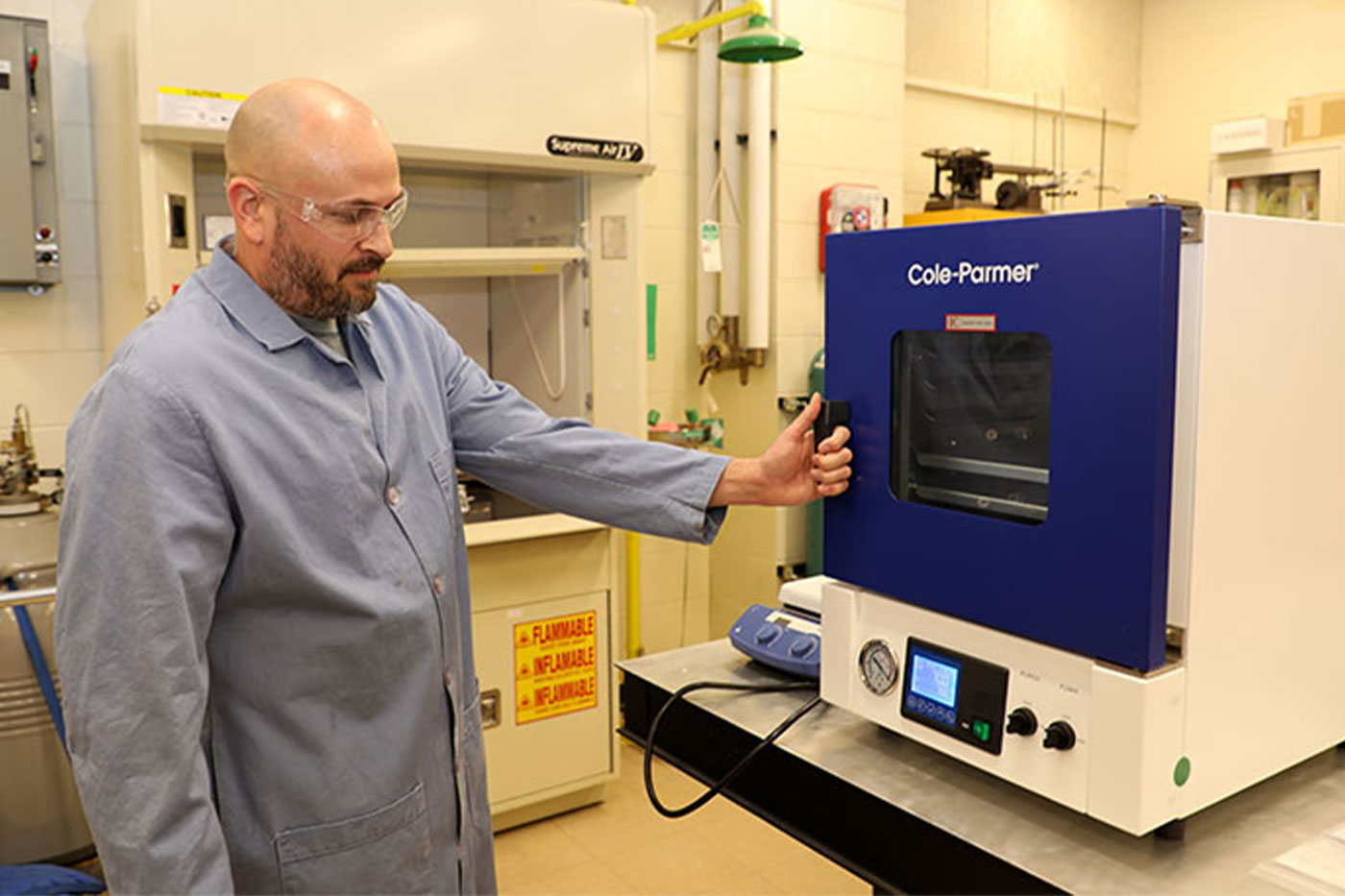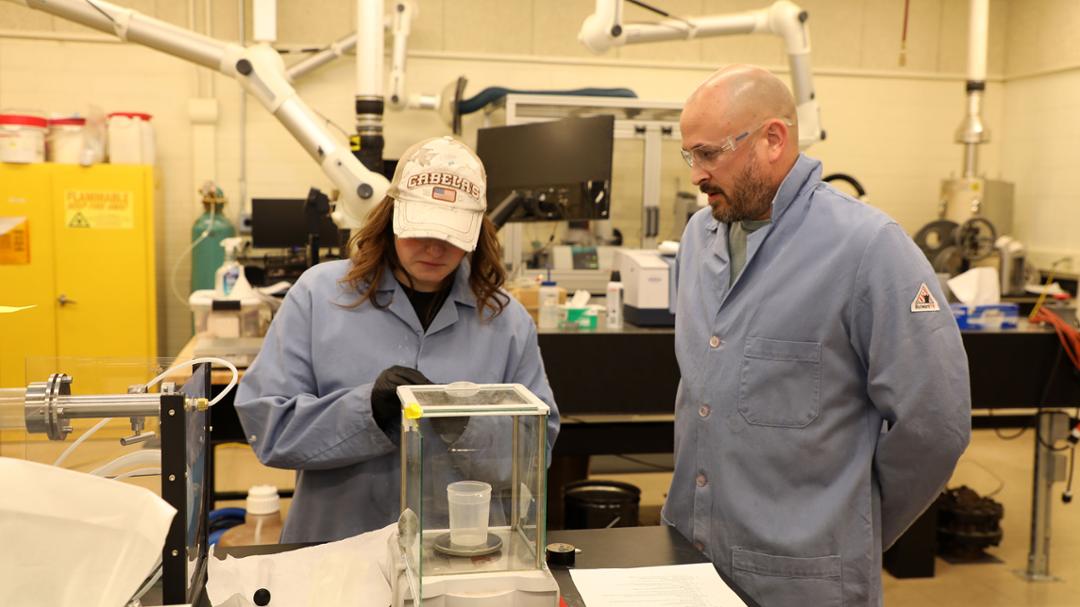Justin Vargas decided he wanted more out of life, and his bet on himself has set him up for a bright future.
It was a brave decision not everybody would make, but Justin Vargas just needed more out of life.
Having spent his adult life in the restaurant industry, the father of four wasn’t finding fulfillment in his career or seeing a bright future for his family, so he decided to gamble on himself.
Living in Amarillo, he decided to enroll at Amarillo College and see if he could find something to feel passionate about.
“I kind of needed something more and just wasn’t really capturing any growing passions I had toward a future,” Vargas said. “I heard some good things about Amarillo College and got enrolled really without a plan. I had somewhat of an interest in science, so I took a chemistry course.”
Starting at a community college seemed like a natural step for Vargas. He praised the quality of teaching there and explained that the Amarillo College environment made an education seem attainable.
“Plus, I don’t think I quite figured out what I wanted to do,” Vargas said. “I just knew that this change I wanted in life came a bit later, and I just felt like an education was the best bet. Since community college is a bit more affordable, I thought it might be a better route to figure out what I want to do.”
After a few semesters at Amarillo College, Vargas thought he had it figured out. After completing an associate degree in mathematics, he decided to continue his education with a bachelor’s degree in chemical engineering at Texas Tech University.
The two colleges have an agreement allowing all credits to transfer, so the process was seamless, and Vargas was soon enrolled in the Edward E. Whitacre Jr. College of Engineering.
The path, this time, seemed much clearer, but even the best-laid plans have a way of changing.
For Vargas, chemical engineering wasn’t the right fit, so he once again decided to change course.
“I heard some good things about mechanical engineering,” he said. “And everyone has heard about a few professors around here.”
Vargas quickly settled into his place in the Department of Mechanical Engineering. He joined the Growing STEMS Consortium under J.W. Wright Regents Chair in Mechanical Engineering Michelle Pantoya.

Since 2020, Pantoya, who is also director of the Combustion Lab, has partnered with four universities, Sandia National Laboratories, Los Alamos National Laboratory, Consolidated Nuclear Security, Pantex and Y-12 through Growing STEMS to train the next generation of engineers for the U.S. Department of Energy (DOE) National Nuclear Security Administration (NNSA) workforce.
“I took a tour of the Combustion Lab before I really got on board,” Vargas said. “And even though I didn’t really know exactly what everything was, I could see that some of the experiments with combustion, energy energetics and that stuff was definitely interesting to me. The energy content of materials is pretty cool.
“I knew that developing a set of skills and some understanding with some of the stuff they do in the lab would give me confidence.”

Vargas is set to graduate this May, but his gamble is already paying off.
Through Growing STEMS, he has a job lined up with Pantex upon graduation and is looking forward to starting his new career.
“It’s a big relief,” he said of the job offer. “As far as what to expect when I get there to be honest with you, I really don’t know. I mean, I am in the middle of my security clearance, so I don’t know much about the department I’m going to be in.
“But I do know that there are fundamental practices in the combustion lab that will overlap into what I could be involved in Pantex. Being in that environment and getting accustomed to data analysis and the rigorous hands-on stuff in the lab, seeing what it’s like to really like apply science or engineering practice outside of a course, it’s not something I had done before.”

